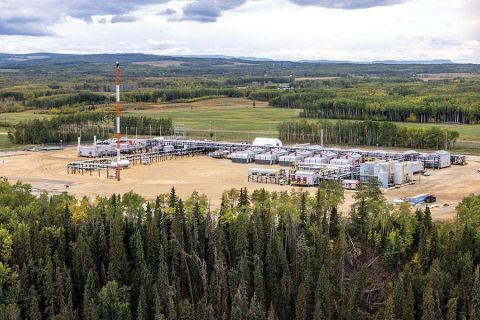The 2005 hurricane season has been fast and furious, and some E&P analysts are concerned that the worst is yet to come. "We are already on the season's fifth named storm, at a point in which we would normally have only seen one," JPMorgan analyst Shannon Nome said in July. In only 12 previous years on record-most recently in 1986-two or more tropical storms formed in the month of June, she added. "Based on the early start, we believe this season will generate 15 to 20 named storms, which would be one of the most active years on record." UBS equity analyst Ronald Barone says, "If last year is any indication-with Hurricane Ivan damage to infrastructure accounting for 172 billion cubic feet (Bcf) of lost gas production and 44 million barrels of lost oil production over a six-month period-the current forecast could spell major trouble for U.S. Gulf of Mexico oil and gas producers." Disruptions to already weak North American oil and gas production and deliverability could push commodity prices to new highs. Tropical Storm Cindy and Hurricane Dennis caused more than 22 Bcf of gas and 5 million barrels of oil to be shut-in for several weeks, temporarily stunting supply, Nome reported. Also, damage during Dennis will delay production from BP's giant Thunder Horse development, Nome noted. Production was to start later this year, and represent 9% of total Gulf production by year-end 2007. During the 15 storms that ripped through the Gulf's producing areas in the past five years, Nome said commodity prices rose on average 80% of the time. "If anything, this likely understates the true effect on oil and gas prices, since damage-inducing storms can cause extended production shut-ins that often do not become clear until days or weeks after the storm concludes." With long-range forecasting today, "the market may be anticipating storm events and pushing up prices well before our measurement period."
Recommended Reading
Atlas Commissions 42-mile Dune Express Conveyor, Lowers 3Q Guidance
2024-10-10 - Atlas Energy Solutions said its Dune Express proppant conveyor remains on time and on budget, but the company expects lower revenue and EBITDA for the third quarter.
With Montney Production Set to Grow, US E&Ps Seize Opportunities
2024-10-02 - Canada’s Montney Shale play has already attracted U.S. companies Ovintiv, Murphy and ConocoPhillips while others, including private equity firms, continue to weigh their options.
Exxon Plans Longest 20,000-Ft Wells on Pioneer’s Midland Asset
2024-11-04 - Exxon Mobil has already drilled some of the longest wells in the New Mexico Delaware Basin. Now, the Texas-based supermajor looks to go longer on Pioneer’s Midland Basin asset.
Nabors Takes to Global Expansion in 3Q as Rig Count Shrinks in Lower 48
2024-10-25 - Nabors Industries saw broad growth across key international geographies in third-quarter 2024, with more rig deployments expected.
E&P Highlights: Sept. 23, 2024
2024-09-23 - Here's a roundup of the latest E&P headlines, including Turkey receiving its first floating LNG platform and a partnership between SLB and Aramco.
Comments
Add new comment
This conversation is moderated according to Hart Energy community rules. Please read the rules before joining the discussion. If you’re experiencing any technical problems, please contact our customer care team.





